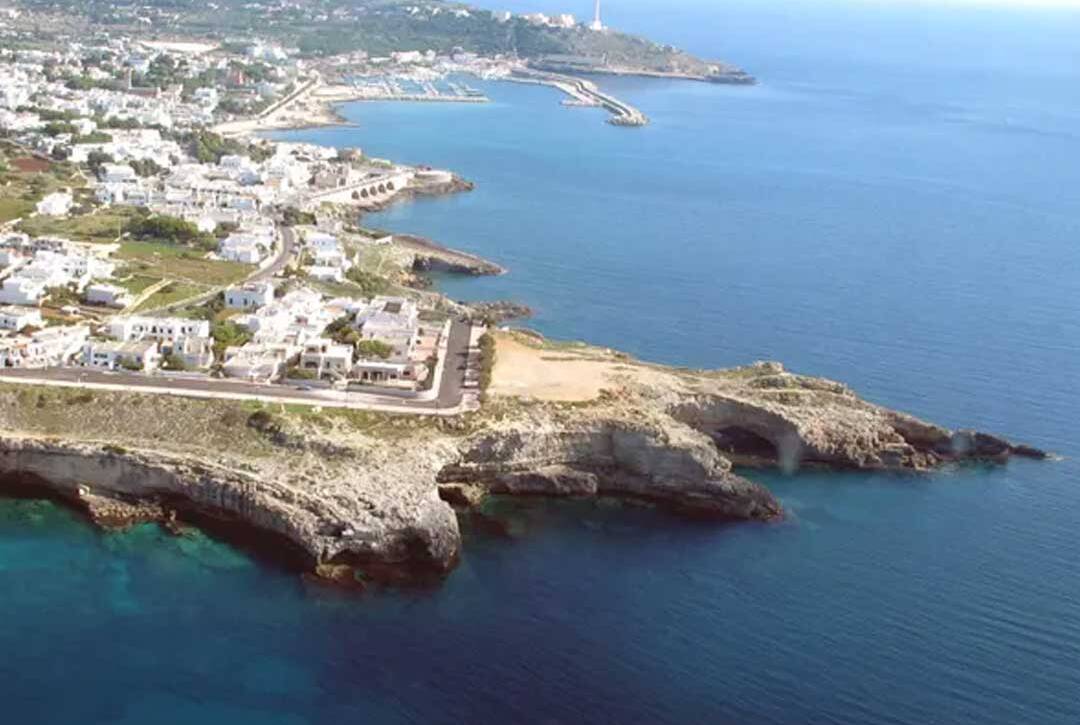
PUNTA RISTOLA – SANTA MARIA DI LEUCA
PUNTA RISTOLA AND PUNTA MELISO
Punta Ristola and Punta Meliso are the two headlands that enclose the bay of Santa Maria di Leuca. These rocky peninsulas extend into the sea as if to protect the landing point that has welcomed sailors along Mediterranean routes for millennia.
INDEX
- Where the Two Seas Divide
- The Caves of Santa Maria di Leuca
- The Most Beautiful Sunset in Italy
- The Legend of Leucasia
- The Piety of the Goddess Minerva
- Where is the True Point Where the Adriatic and Ionian Seas Divide?
PUNTA RISTOLA AND PUNTA MELISO
Punta Ristola and Punta Meliso are the two headlands that enclose the bay of Santa Maria di Leuca. These rocky peninsulas extend into the sea as if to protect the harbor that has welcomed sailors on Mediterranean routes for millennia.
INDEX
-
Where the two seas divide
-
The caves of Santa Maria di Leuca
-
The Most Beautiful Sunset in Italy
-
The Legend of Leucasia
-
The Compassion of the Goddess Minerva
WHERE IS THE TRUE POINT WHERE THE ADRIATIC AND IONIAN SEAS DIVIDE?
The official geographical boundary between the Ionian and Adriatic Seas is actually represented by the Strait of Otranto, but the spectacular meeting of the two seas can be seen near Santa Maria di Leuca.
Near Santa Maria di Leuca, close to the headland of Punta Meliso, the boundary between the Ionian and Adriatic Seas is sometimes clearly visible. This is due to the different salinity levels of the waters, which create a noticeable color contrast, visible even to the naked eye.
When weather conditions permit, this natural border offers a breathtaking view, perfect for photography. Both locals and tourists who have witnessed this phenomenon describe it as an extraordinary spectacle.
THE CAVES OF PUNTA RISTOLA
Punta Ristola is also known as the gateway to the so-called Devil’s Cave, a space extending 40 meters in length and 17 meters in width, leading directly to the sea. Inside, important artifacts have been discovered, suggesting human presence in this location since the Neolithic era. The cave, situated below ground level, is rich in crevices, has dim lighting, and strongly echoes sounds, all of which contributed to its ominous name.
Also at Punta Ristola is the Porcinara Cave. Unlike the others, this cave was carved by humans and was once a place of worship, an ancient pagan temple. Inside, significant inscriptions dedicated to pagan deities from the Messapian and Greek eras, as well as Christian crosses, have been found.
From Punta Ristola, following the paths westward, you can find other caves that are visible from above but can only be visited by boat:
-
Mesciu Gianni Cave
-
River Cave
-
Three Doors Cave
-
Giants’ Cave
-
Nativity Scene Cave
-
Stable Cave
-
Dragon Cave
THE MOST BEAUTIFUL SUNSET IN ITALY
The view from Punta Ristola offers one of the most spectacular panoramas of Marina di Leuca.
One of the most beautiful sunsets in Italy can be witnessed in Santa Maria di Leuca, precisely at Punta Ristola, one of the two headlands (extending westward) that enclose the bay of this charming town, also renowned for its numerous archaeological discoveries in recent years.
Alternatively, you can experience the sunset directly from the sea by booking an evening boat excursion with an onboard aperitif.
Enjoy a three-hour sunset boat tour on the marvelous waters of Salento.
A local skipper will guide you along the coast of Santa Maria di Leuca, revealing its extraordinary natural caves on both the Ionian and Adriatic sides. You will admire the stunning Cazzafri Cave, Terradico Cave, and Devil’s Cave and enjoy a refreshing swim in crystal-clear waters.
The tour also includes an onboard aperitif with prosecco, soft drinks, and taralli.
THE LEGEND OF LUCASIA
According to legend, the beautiful mermaid Leucàsia, with her long golden hair, fair skin, and enchanting voice, lived in the waters off the coast of Santa Maria di Leuca.
One day, upon seeing the handsome shepherd Melisso, she tried to seduce him with her song and beauty. However, Melisso, deeply in love with the noble Arìstula, rejected her advances.
Furious at the rejection, the mermaid sought revenge. When she later saw the two lovers embracing on the cliffs, she violently lashed the sea with her tails, unleashing a terrifying storm. The young couple was swallowed by the waves and drowned, their bodies washing up on opposite sides of the bay.
THE COMPASSION OF THE GODDESS MINERVA
From above, the Goddess Minerva, moved by the tragic fate of the lovers, decided to immortalize them in stone. Thus, Punta Meliso and Punta Ristola were formed, forever reaching toward each other across the bay without ever touching.
Even the mermaid, consumed by remorse, was turned to stone, becoming what is now the town of Leuca.
Today, a sculptural monument of the mermaid stands as a silent guardian over the harbor of Leuca, commemorating this timeless legend.






